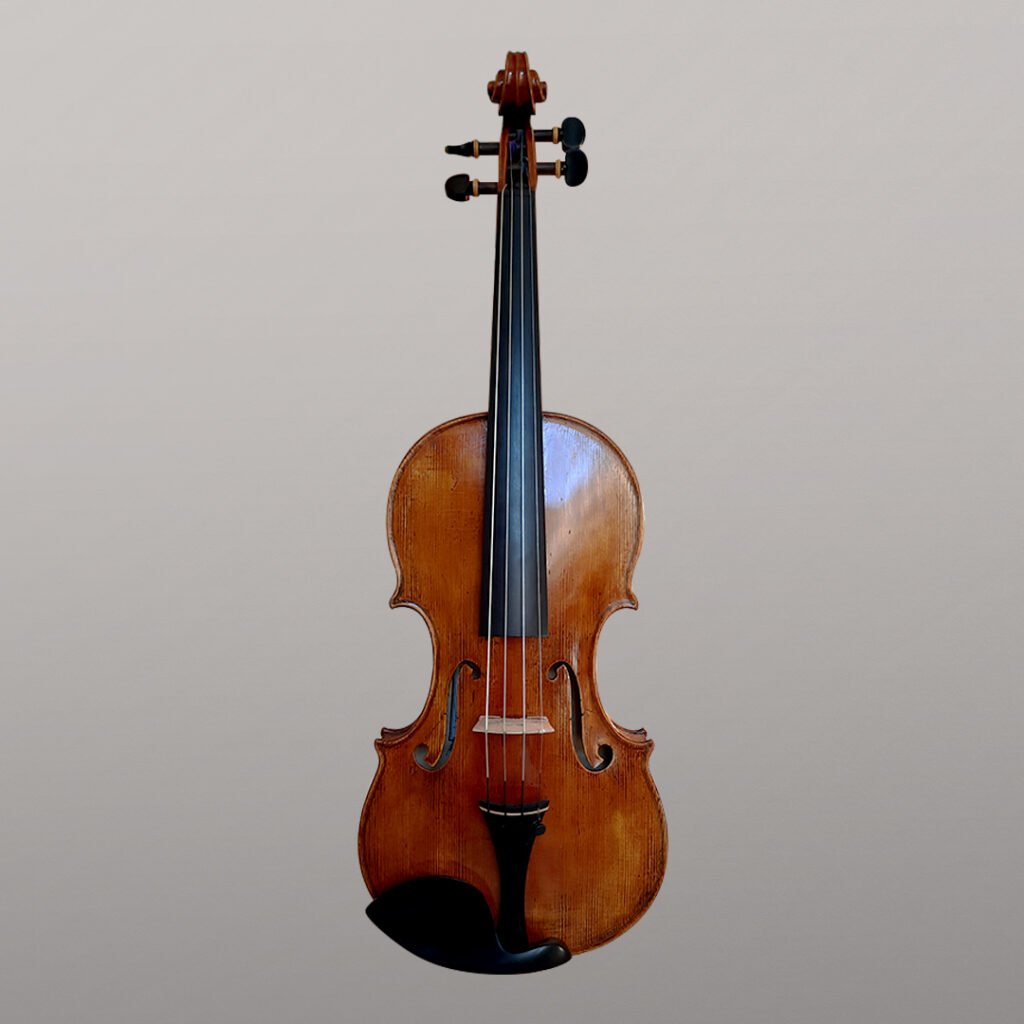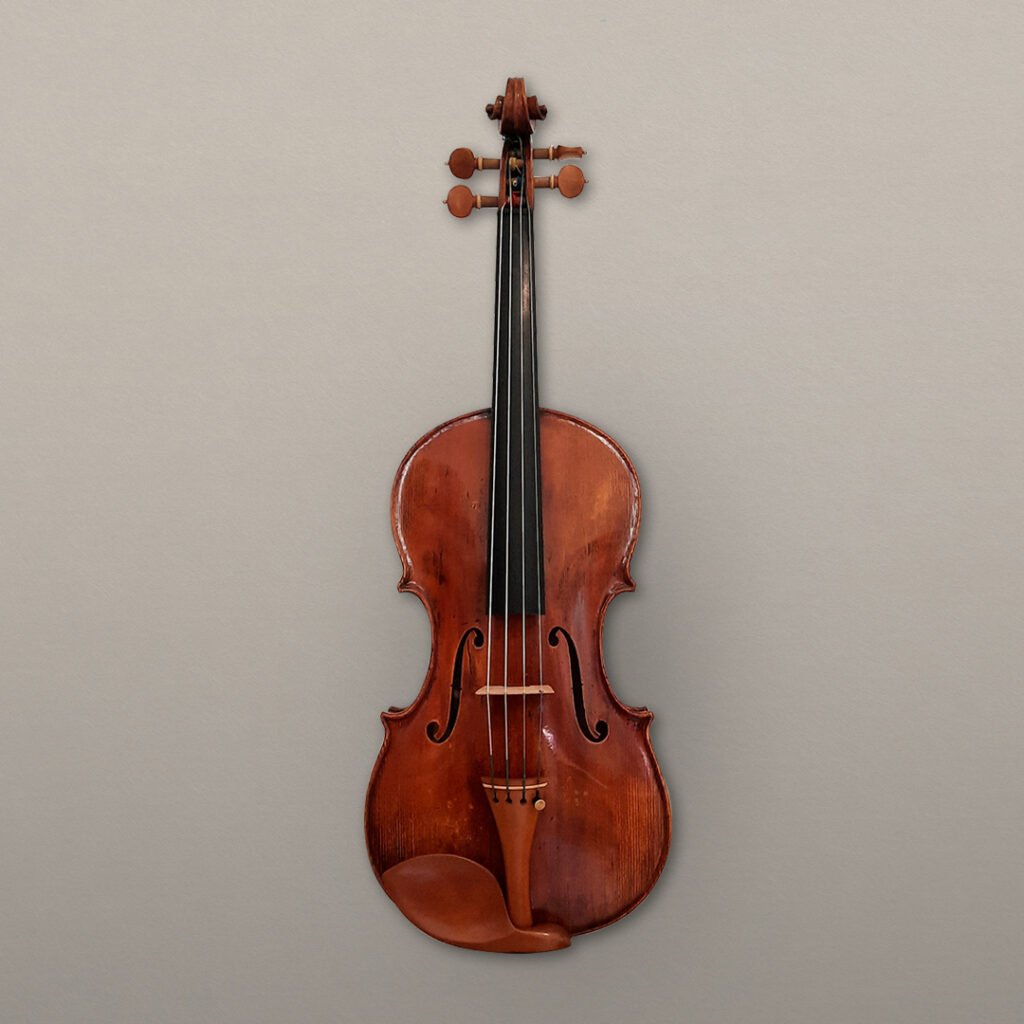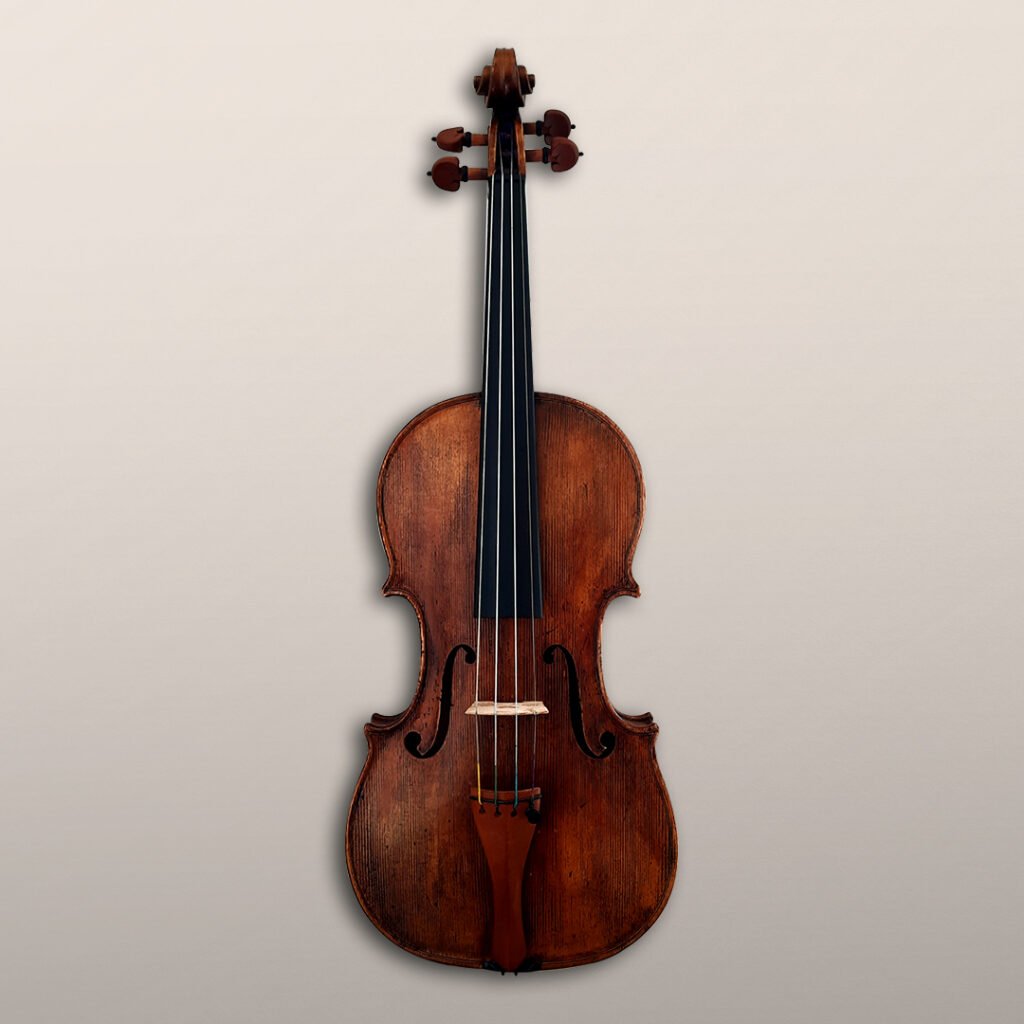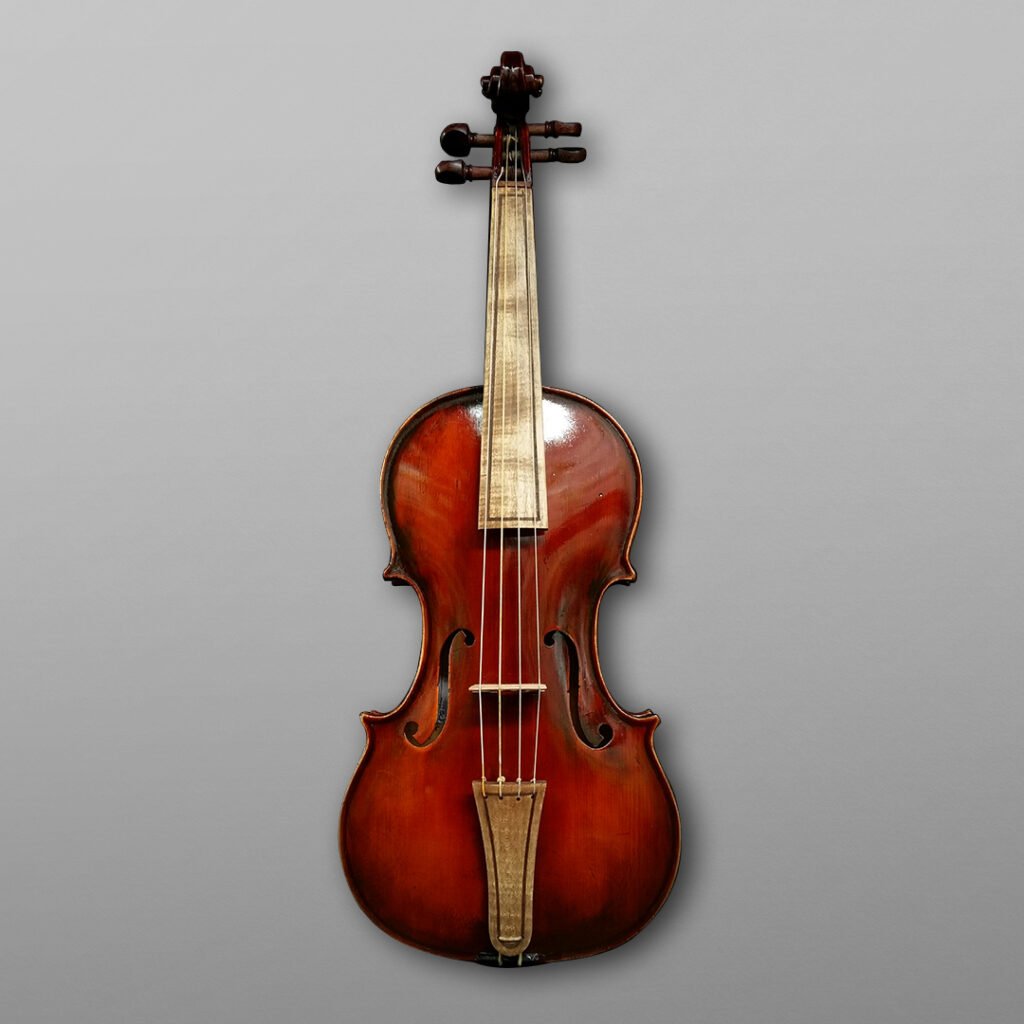
Handmade Violins: Why They’re the Best Investment for Discerning Musicians
One of the most frequently asked questions in my workshop is: “Why choose handcrafted violins?” If you’re here, you might be wondering the same thing. Let me guide you through my experience so you can understand why a handmade violin can be the best companion on your musical journey.
How to Choose a Handcrafted Violin?
Choosing a violin can be overwhelming, especially when faced with a sea of factory-made options that promise a lot for little money. The key is to focus on what truly matters: sound, comfort, and personal connection. A violin is not just an object; it is an extension of your body and your musical voice.
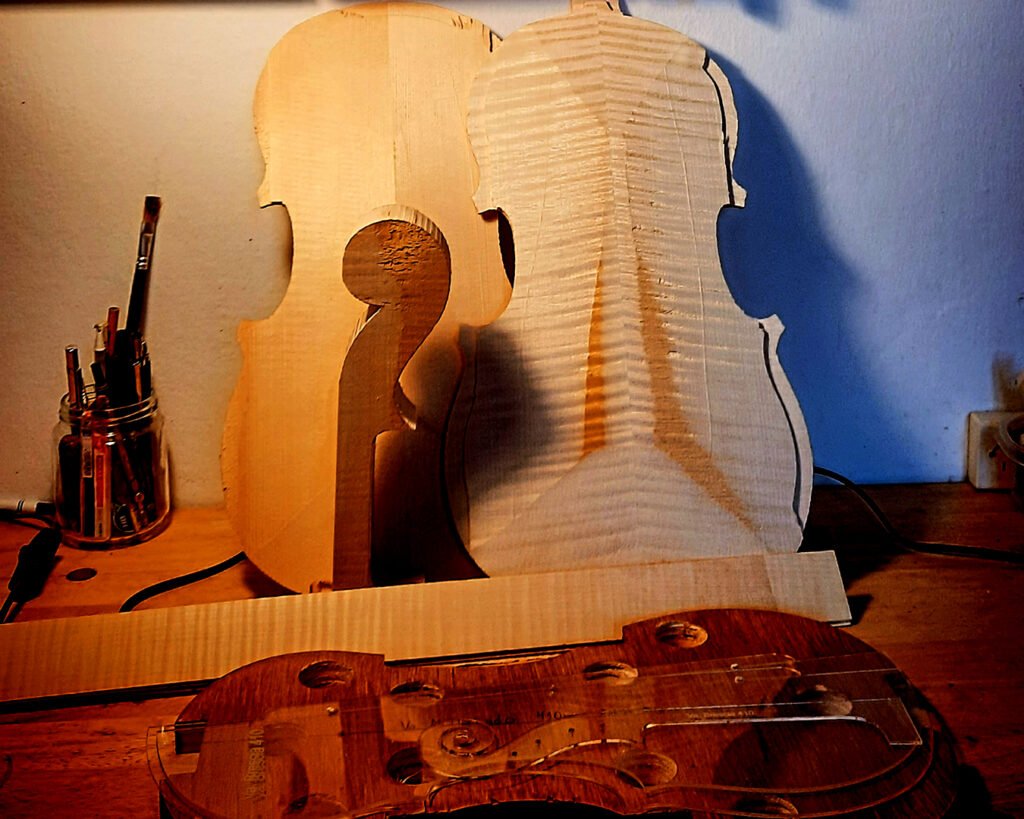
When I work on an instrument, I think about the person who will play it. Every detail—the shape of the neck, the curvature of the top plate, the adjustment of the soundpost—is designed to make the violinist feel that the instrument was made specifically for them. This is where handcrafted violins have a true advantage: they are not mass-produced items but unique pieces, carefully crafted for discerning musicians.
Why Are Handcrafted Violins Better?
A handcrafted violin has something that cannot be replicated in a factory: soul. The construction process is entirely manual, allowing each stage to be carefully inspected, adjusted, and refined to achieve optimal acoustic performance.
For example, I select the woods with extreme care. For the top plate, I use slow-grown spruce, ideal for producing a clear and resonant tone. For the back and ribs, I prefer maple with well-defined grain patterns, which not only enhances visual beauty but also contributes to a warm and balanced sound.
In an industrial violin, these decisions are based on production speed rather than sound quality. It’s like comparing a tailor-made suit to an off-the-rack one—both will cover you, but only one will fit like a second skin.
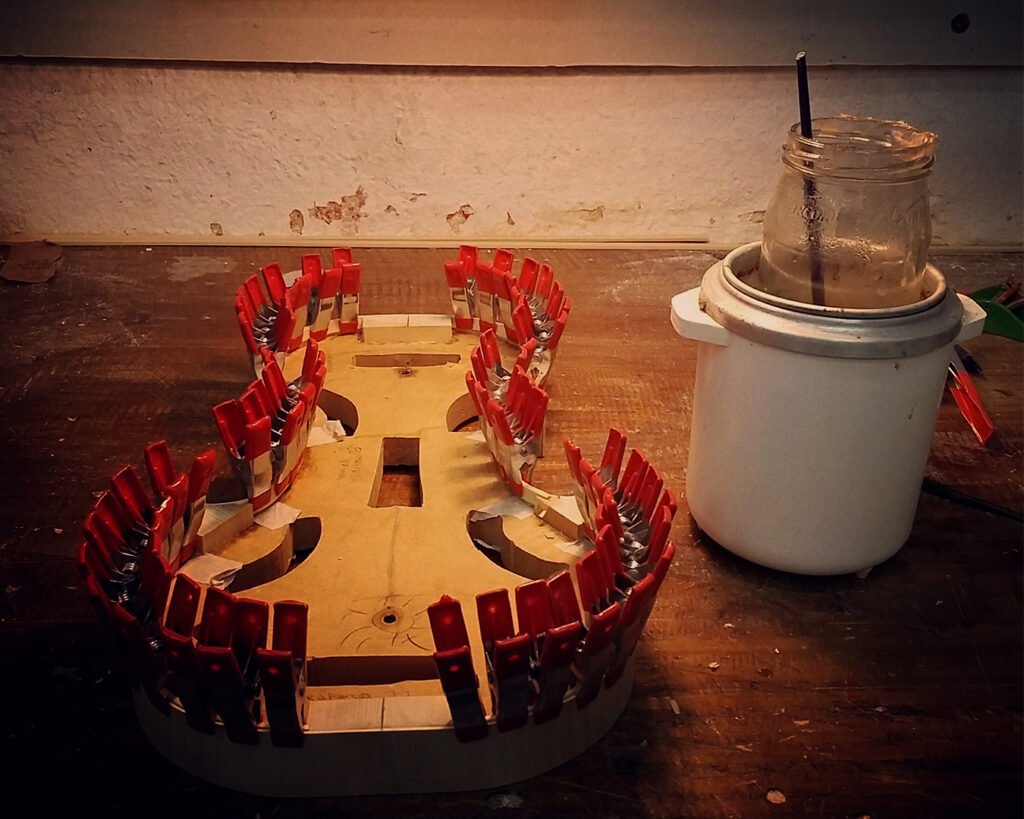
What Materials Does a Good Luthier Use?
The secret of a great violin lies in the materials and how they are crafted. Beyond the wood, I pay special attention to the varnish, which I apply manually in thin layers. This not only protects the wood but also influences the sound, allowing the instrument to “breathe” and resonate freely.
Details such as the tailpiece, pegs, and chin rest are made from fine woods like ebony or rosewood, ensuring durability and an impeccable aesthetic. These are not minor details—every small component affects how the violin responds under the bow.
How Much Does a Handcrafted Violin Cost?
I know this is one of the biggest questions. A handcrafted violin is not cheap—nor should it be. The price can vary depending on the luthier, level of customization, and materials, but generally ranges between $2,000 and $20,000 USD.
Why? Because you’re not just buying an instrument; you’re investing in the dedication, expertise, and countless hours required to create it. In my case, I spend weeks working on a single violin, from carefully selecting the wood to refining the final details.
The good news is that a handcrafted violin not only holds its value but can even appreciate over time. Many musicians tell me that after years of playing one of my violins, they feel its sound has improved even more—as if the instrument has grown with them.
The Magic Behind a Handcrafted Violin
One of the things I love most about my work is seeing a musician’s reaction when they play a freshly finished violin. There’s an immediate connection, as if the instrument instinctively knows what the violinist wants to express.
That doesn’t happen with a factory-made violin, where everything is standardized. A handcrafted violin, on the other hand, carries the mark of its maker and adapts to the needs of the player. That’s why musicians of all levels—from advanced students to professionals—choose this path.
If you’re looking for a violin that truly speaks to you, I invite you to explore the world of handmade instruments. It doesn’t matter whether you’re just starting out or have been playing for years—a handcrafted violin could be the push you need to take your music to the next level.
In my workshop, every violin I build has its own unique personality, but they all share one thing in common: they are made with love for music and deep respect for the art of lutherie. Are you ready to discover it? ✨
Violins and Violas for Sale
Handmade Violins: Why They’re the Best Investment for Discerning Musicians

One of the most frequently asked questions in my workshop is: “Why choose handcrafted violins?” If you’re here, you might be wondering the same thing. Let me guide you through my experience so you can understand why a handmade violin can be the best companion on your musical journey.
How to Choose a Handcrafted Violin?
Choosing a violin can be overwhelming, especially when faced with a sea of factory-made options that promise a lot for little money. The key is to focus on what truly matters: sound, comfort, and personal connection. A violin is not just an object; it is an extension of your body and your musical voice.

When I work on an instrument, I think about the person who will play it. Every detail—the shape of the neck, the curvature of the top plate, the adjustment of the soundpost—is designed to make the violinist feel that the instrument was made specifically for them. This is where handcrafted violins have a true advantage: they are not mass-produced items but unique pieces, carefully crafted for discerning musicians.
Why Are Handcrafted Violins Better?
A handcrafted violin has something that cannot be replicated in a factory: soul. The construction process is entirely manual, allowing each stage to be carefully inspected, adjusted, and refined to achieve optimal acoustic performance.
For example, I select the woods with extreme care. For the top plate, I use slow-grown spruce, ideal for producing a clear and resonant tone. For the back and ribs, I prefer maple with well-defined grain patterns, which not only enhances visual beauty but also contributes to a warm and balanced sound.
In an industrial violin, these decisions are based on production speed rather than sound quality. It’s like comparing a tailor-made suit to an off-the-rack one—both will cover you, but only one will fit like a second skin.

What Materials Does a Good Luthier Use?
The secret of a great violin lies in the materials and how they are crafted. Beyond the wood, I pay special attention to the varnish, which I apply manually in thin layers. This not only protects the wood but also influences the sound, allowing the instrument to “breathe” and resonate freely.
Details such as the tailpiece, pegs, and chin rest are made from fine woods like ebony or rosewood, ensuring durability and an impeccable aesthetic. These are not minor details—every small component affects how the violin responds under the bow.




